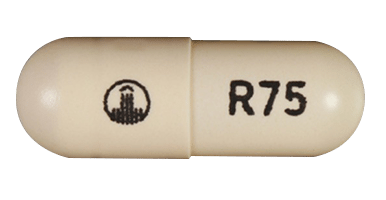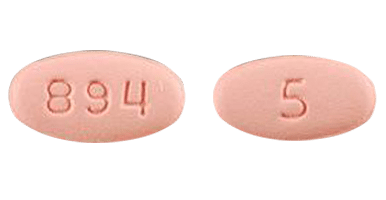What Is A Ivc Filter
IVC filters help people who are recovering from accidents and surgeries past preventing potentially fatal lung clots. Doctors usually place the devices in people who are at risk for pulmonary embolism when blood thinners are ineffective or not an option.
Doctors insert the temporary or permanent device into a patient's junior vena cava, the main vein in the body that returns de-oxygenated blood from the lower body back to the eye and so to the lungs. The device resembles a metal cage. The filter's metal wires capture and trap traveling claret clots before they reach the heart and lungs. Even so, if left in as well long, the filters may cause a variety of serious complications.
The U.S. Food and Drug Administration approved the device in 1979, and its use has increased continuously through the years. By 2012, doctors had inserted about 259,000 filters in patients, according to a 2016 study in Seminars in Interventional Radiology.
But a 2016 analysis published by the American College of Cardiology found the devices were likely being over-used, retrieval rates were low and surveillance data was lacking.
"In the United states of america, the IVC filter implantation rates are 25 fold higher than in Europe," co-ordinate to Dr. Riyaz Bashir, manager of vascular and endovascular medicine at Temple University Hospital. "The hospitals beyond this state collectively are spending close to a billion dollars on these devices every year without a known significant benefit."
Retrievable versions of the filters should only be left in for a brusk time.
"The advent of retrievable filters led to more widespread employ because information technology was thought that they could safely be used as either temporary or permanent device implants. However, this false sense of confidence has really led to overuse of filters. Even though retrievable filters were also approved for utilise as permanent devices, it turns out they may not be rubber for longterm implantation. To brand matters worse, many of these filters become firmly embedded over time making them hard to safely remove," Dr. William Kuo, Managing director of the Stanford IVC Filter Clinic told Drugwatch.
"Historically, most filters implanted in the U.S. take not been adequately followed for removal. By the time the filter has been rediscovered, often years later, the devices take grown into the vein wall making them a challenge to remove safely," Dr. Kuo said.
In 2010 and again in 2014, the FDA issued rubber warnings about IVC filter complications, including device migration, filter fracture, embolization, blood vessel perforation, difficulty removing the device, lower limb deep vein thrombosis and inferior vena cava apoplexy.
"The FDA is concerned that retrievable IVC filters, when placed for a short-term risk of pulmonary embolism, are not ever removed once the gamble subsides."
The bureau recommends doctors consider removing retrievable filters as soon as the risk of pulmonary embolism passes and usually within a 29- to 54-day window. Later on that time menstruation, potential damage outweighs the probable benefit, according to a 2013 FDA analysis published in the Journal of Vascular Surgery.
"The FDA is concerned that retrievable IVC filters, when placed for a short-term risk of pulmonary embolism, are not always removed in one case the risk subsides," the agency said in a 2014 safety communication.
Chaser Holly Ennis explains the characteristics of an IVC Filter.
Filter Uses and Types
Claret clots that develop deep within the pelvis and the lower and upper extremities are referred to as deep vein thrombosis, or DVTs.

IVC Filters are designed to catch clots before they accomplish the heart and lungs.
DVTs tin become life-threatening if they travel to the lungs and cause significant blockage in the lung arteries thereby interfering with oxygenation. This is known as acute pulmonary embolism, or PE. Human foot cause about 300,000 deaths every year and they are the third most common cause of cardiovascular death in infirmary patients.
People who take blood thinner medications simply still experience DVTs and/or people who cannot tolerate blood thinners considering of current haemorrhage or gamble of bleeding are candidates for IVC filters. Doctors occasionally recommend the devices prophylactically in patients who are undergoing major surgery if at that place is a high risk they may develop claret clots.
Historically, 2 types of IVC filters have been manufactured: permanent and retrievable. Due to the risk of filter-related complications from prolonged implantation, permanent filters take largely been replaced by retrievable-type filters. However, even though retrievable filters were likewise approved for use as permanent devices, it turns out they may not exist safety for longterm implantation either. Therefore, both filter types may cause complications downwardly the road if non monitored closely and promptly removed..
"There are over two dozen filter types that may exist encountered in patients residing in the U.S. The spectrum ranges from old, permanent devices inserted decades ago that accept now been discontinued all the manner to the latest retrievable ones." Dr. Kuo said.
Some companies that manufacture devices available in the U.s. are ALN Implants, Argon Medical, B. Braun, BD Interventional (formerly C.R. Bard), Boston Scientific, Cook Medical, Boston Scientific, Cordis J&J, Mermaid Medical.
Some brands include:
- The Bard G2 Limited filter
- The Bard G2 filter
- The Bard Recovery filter
- The Cook Celect filter
- The Cook Gunther Tulip filter
- The Boston Scientific Greenfield filter
Placement and Removal
Doctors use a catheter to insert the device into a patient's inferior vena cava through a modest incision in either the neck or groin.
The way doctors remove retrievable filters is like to how they implant them. Health intendance providers inject contrast or X-ray dye in the vessel containing the device to make sure there are no blood clots in the filter prior to attempting removal. A catheter-like snare is and then inserted into the vein and used to engage the retrieval hook located at the stop of the filter. A sheath is then inserted over the filter to collapse and remove the filter.
Lawsuit Information
Individuals are suing for blood clots, device migration and other IVC filter complications. Learn more nigh awaiting cases.
Possible Complications
IVC filters have the potential to migrate away from their implanted location. Sometimes the device components may penetrate through the vein leading to a variety of complications. Broken pieces of filters tin travel through the claret and lodge into organs such equally the heart.
"Patients should effort to identify exactly which device was implanted inside them, because some filters have been associated with a higher risk of complications including fractures, penetrations, even blood clots," Dr. Kuo told Drugwatch. "No device is perfect, and I have actually seen major complications occur from every filter type in beingness."
Complications typically fall into three categories: procedural, delayed and retrieval.
Procedural complications may occur when doctors insert the filter. These include:
- Admission site haemorrhage and/or bruising
- Wrong placement and/or malposition of filter
- Lacking filter deployment
Retrieval complications may occur when doctors remove the filter and include:
- Bleeding
- Blood clots
- Difficult retrieval causing long procedure times and excess radiation exposure
Delayed complications may occur after the filter is in the trunk and include:
- Filter fracture
- Filter component migration into the heart or other organs
- Filter penetration into adjacent organs
- Vessel scarring with run a risk of blood clots (Deep vein thrombosis)
- Vessel blockage resulting in debilitating pain and leg swelling.
Adverse Issue Reports and FDA Actions
Between 2005 and 2010, the FDA received nearly ane,000 adverse event reports involving IVC filters. Most involved device migration and embolization, which is a movement of the entire filter or fracture fragments to the heart or lungs. 70 cases involved perforation of the vena cava or internal organs, and 56 involved the device breaking.
The agency concluded the complications could have been related to retrievable filters remaining in the body after the risk for pulmonary embolism had subsided. It recommended removing retrievable devices within 1-2 months after implantation, once the filter is no longer needed.
Madris Tomes, former FDA project manager, highlights what makes the FDA's adverse upshot reports for IVC filters unique.
The FDA is also requiring manufacturers to participate in studies that will provide additional information near the safety of permanent and retrievable filters. Manufacturers have been given the option of participating in specific research, known every bit the PRESERVE study, or various postmarketing surveillance studies.
PRESERVE stands for PREdicting the Safety and Effectiveness of Junior VEna Cava Filters. The independent national clinical report will examine the safety and effectiveness of using IVC filters to prevent pulmonary embolism. The PRESERVE study is slated for completion in May 2019.
The information gathered from the PRESERVE study and the 522 postmarketing studies volition "help the FDA, manufacturers and wellness care professionals assess the utilise and safety profile of these devices likewise equally sympathise evolving patterns of clinical utilise of IVC filters, with the goal of ultimately improving IVC filter utilization and patient care," according to a 2016 study in Seminars in Interventional Radiology.
Withal, the master limitation with PRESERVE is that the protocol simply required a minor number of patients per filter type and a brusque follow-upwardly interval overall. This PRESERVE protocol blueprint was eerily similar to the flawed trials that manufacturers initially used to obtain FDA clearance of these verbal filters via the not-rigorous 510K pathway—the same pathway that has immune approval of many other faulty devices such equally nickel-based hip implants.
Manufacturer Recalls
Half-dozen major IVC filter recalls between 2005 and 2015 affected more than 81,000 units. Packaging and label bug prompted most of the recalls, co-ordinate to the manufacturers.
While there accept been no major recalls since 2015, thousands of people implanted with the devices accept reported complications. And companies accept non recalled some of the nigh problematic devices.
A 2015 NBC News investigation linked Bard Recovery and G2 filters to 39 deaths. The visitor never recalled either device. Instead, it replaced them with similar models.
Melt Medical filters besides face blame for injuries and deaths. The FDA has received hundreds of reports of Melt Celect and Gunther Tulip issues, but the visitor never issued recalls for either.
Meanwhile, thousands of people who suffered injuries have filed IVC filter lawsuits.
What Studies Say
Research studies have confirmed problems with retrievable IVC filters. A 2013 study in the Periodical of the American Medical Clan, or JAMA, looked at the devices' failure rate. Researchers discovered doctors merely removed 58 out of 679 retrievable filters. When the filters remained in patients longer than medically necessary, 18.3 percentage of attempts to remove the devices failed, seven.viii percent of patients had venous thrombotic events, and 25 patients suffered pulmonary embolisms.
Failure Rates
Introduced in 2003, the Recovery filter was C.R. Bard's first-generation product. A 2d-generation device, the Bard G2, arrived in 2005 as a replacement for the Recovery. But before Bard replaced the Recovery, the FDA had received 300 reports of agin events linked to the device.
Results from one report showed about 25 percentage of the Recovery filters failed, causing the device to fracture or break autonomously. One patient died at dwelling, although the report did not explain the reason. The NBC News investigation linked the device to at least 27 deaths.
The Bard G2 had a 12 percent failure rate and remained on the market a shorter amount of time than its predecessor. Bard stopped selling the Recovery when the G2 arrived on the market place in 2005. The G2's successor, the G2 Express, entered the market in 2008. One study constitute all of Bard's devices experienced a combined 12 percentage fracture rate.
'Meaning Decline' in Use Since 2010
A 2017 study establish utilize of IVC filters experienced a "significant decline" after the FDA's 2010 rubber warning.
Researchers at Washington University School of Medicine in St. Louis looked at more than than one one thousand thousand patient records covering a 10-yr menstruum. Between 2005 and 2010, use of the device rose by more than 22 percentage. But it dropped dramatically after the FDA advisory, falling more than than 25 pct by 2014.
At their peak in 2010, almost 130,000 IVC filters per twelvemonth were placed in patients. By 2014, the number had dropped to around 96,000, according to the medical textbook, Vascular Medicine: A Companion to Braunwald's Heart Disease.
College Mortality Risk
A study that appeared in JAMA Network Open in 2018 found an association between IVC filters and increased risk of death. The study looked at 126,000 patients' medical records and establish the take chances of dying within xxx days of getting a filter shot up 18 percent for certain patients.
Those at adventure had 2 specific conditions: they had venous thromboembolic disease, or VTE, disease and they could not take blood thinners. VTE includes deep vein thrombosis, pulmonary embolism or both.
The researchers called for randomized clinical trials to better test the filters' safety and effectiveness.
Other Treatment Options
IVC filters should primarily be used in patients with acute blood clots who cannot take blood thinners. If filters are used for whatever other reason, this should only be done after careful consideration and appropriate documentation, experts say. Otherwise, filters should not be widely used, and most patients with blood clots should simply be treated with blood thinners, shut monitoring and lifestyle modifications.

Pradaxa, an case of a blood thinner alternative to IVC filter

Eliquis, an example of a blood thinner culling to IVC filter
Historically, the most widely used claret thinner was warfarin, but newer anticoagulants like Xarelto, Pradaxa and Eliquis are increasingly being prescribed. All blood thinners are associated with an increased take a chance for bleeding, so patients should exist closely monitored, especially those patients who are prescribed life-long blood thinners.
What Is A Ivc Filter,
Source: https://www.drugwatch.com/ivc-filters/
Posted by: brownkelp1992.blogspot.com


0 Response to "What Is A Ivc Filter"
Post a Comment